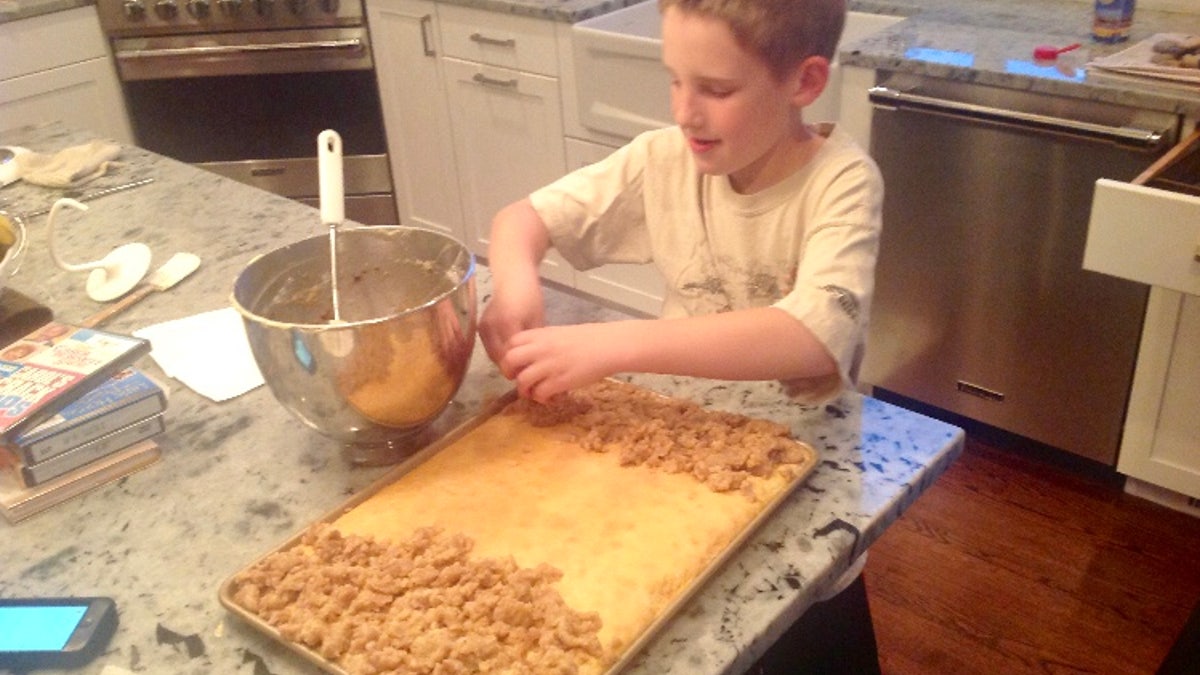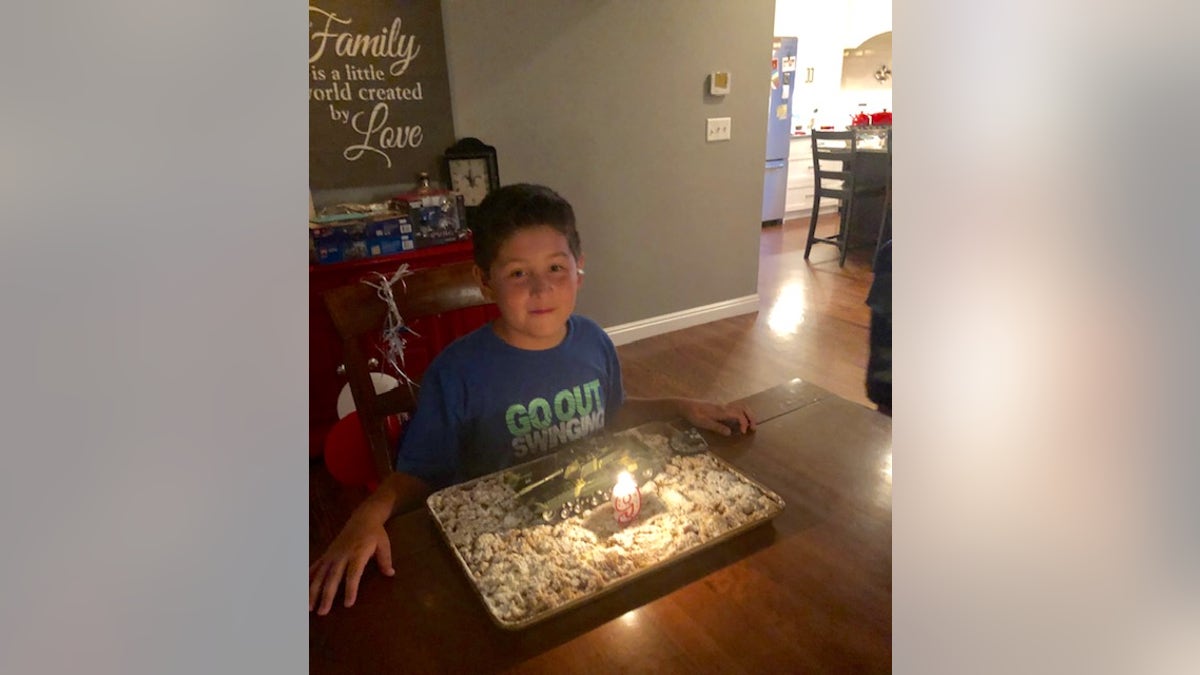It’s just after 5 p.m. on a Friday and I’m riding my brown Schwinn bike down Gale Avenue in Baldwin on New York's Long Island The wire basket, which is bolted to the handlebars, is stacked high with Newsday, Long Island’s only daily newspaper.
This is happening in the fall of 1985 on the first collection day on my new route, the most laborious but rewarding of all seven days of the week for a paperboy. I stop, dismount, and lean the bike against a towering Maple tree. With a paper in hand, I walk up the path to ring the bell and hopefully get paid for the weeks’ worth of paper delivery. Before the evening is over I’ll have repeated this task 55 times.
I’m waiting patiently on the stoop, knowing somebody has to be inside. Sure enough, the door flings open to reveal a short, stout woman in an apron, flour on her hands and a smudge of grease on her cheek. She’s not happy -- and especially not with me.
PAUL BATURA: BACK-TO-SCHOOL: HOW A STRANGE, WONDERFUL TEACHER CHANGED THE COURSE OF MY LIFE
"Whaddya want kid?" she grunts. "I’m trying to cook dinner in here."
I’m standing outside St. Christopher’s Rectory, the home for the parish’s priests. She’s the cook and working her second job of the day. Her first one is a full-time phone operator at South Nassau Communities Hospital. Startled, her gruffness puts me on my heels but I somehow manage to introduce myself and state my business.
Frowning and mumbling, she proceeds to reach into her pocket and pull out $3.
"You’re probably expecting a tip," she says, handing me the three crumpled bills. "Well, here’s one – if you know what’s good for you, don’t ever come to collect in the middle of dinner again."
And that’s how I met Lee Forster, one of my favorite people of adolescence and quite possibly the best cook I’ve ever known, with the exception of my wife Julie.
In an ironic twist, I wound up working with Lee just a year later after I joined the church staff as the evening receptionist. I discovered that beneath the bearish exterior lay a lovely woman, albeit a hard-charging, irreverent character and the antithesis of the prim and proper church-lady persona.
More from Opinion
As I had learned that first Friday, Lee didn’t suffer fools lightly and possessed a searing and sarcastic wit. A lapsed Catholic, she once told the pastor she turned around and left the church after the priests turned around and faced the congregation following the wholesale liturgical changes of the Second Vatican Council.
She was cheeky and sassy, but boy, could she cook.
When I wasn’t answering calls or the door, I was in the kitchen helping her out – and sampling all of her delicious creations.
My favorite was her Streuselkuchen – or crumb (coffee) cake – a flat cake piled high with crumbs made of sugar, butter and flour that was topped off with a generous dusting of powdered sugar.
Crumb cake’s origins harken back to Western Poland, but German bakers who immigrated to the U.S. get credit for the dessert’s rise in popularity, especially on the East Coast.
My father, who grew up in a German neighborhood on the Queens-Brooklyn border in New York City, used to call the cake "Bumbles" – a nod to the crumbs – arguably the cake’s best part. If you ask me, the best crumb cakes have way more crumbs than cake.
Bringing home pieces of Lee’s crumb cake to my dad transported him back in time to the hard but happy days of his Depression-era childhood. He asked for the recipe and it quickly became a staple in our home.
Good food does more than satiate physical hunger. Prepared well and with love, it can bring back old memories, create new ones and turn strangers into friends or rekindle alliances in ways that U.N. peace treaties never could.
"If more of us valued food and cheer and song above hoarded gold, it would be a merrier world," wrote the writer J.R.R. Tolkien, author of "Lord of the Rings." I think he was right.
The night before my dad went in for open-heart surgery back in 2014, he asked for crumb cake for dessert. He didn’t have to explain why. I knew. If the surgery didn’t go well, he wanted part of his last meal to carry him back to some of his firsts as a child. Our oldest, Riley, who was 9 at the time, offered to make it.

My father survived the big surgery and went on to live three more years. Fittingly, he enjoyed a piece of crumb cake during the last week of his life in 2017, bringing to mind the classic wisdom of the Russian writer Ernestine Ulmer who once remarked, "Life is uncertain. Eat dessert first."
When our son Will turned 9 last week he asked for Lee’s crumb cake, which we happily made for him. As he ate it he asked me about my father and his grandfather’s love of it, as if even at his young age he knows that food is a good story that has a way of bringing together the generations.

CLICK HERE TO SIGN UP FOR OUR OPINION NEWSLETTER
Over the years I’ve shared Lee’s recipe with dozens of people. In the event you’re interested in tasting it for yourself – here it is. I hope you’ll let me know if you like it.
CAKE:
1 package Duncan Hines French Vanilla cake mix
1 envelope of Dream Whip
1 cup water
4 eggs
1 tsp vanilla
- Mix on high for 4 minutes.
- Bake 20-25 minutes (cake is not done) at 350 degrees in a 15 X 11 cookie pan with sides.
CRUMBS:
1 ¼ pounds of butter
5 cups of flour
1 2/3 cup of sugar
2 -3 tablespoons of cinnamon
3 tablespoons vanilla
Mix together by hand.
Place crumbs on cake, place cake back in oven for 20 minutes.
Shut off oven, leave in cake for 5 minutes for crusty layer on crumbs.
Sprinkle on powdered sugar.
CLICK HERE TO GET THE FOX NEWS APP
I’ll admit it’s not the healthiest of foods, in fact, it's far from it. But it’s delicious and even the richest of desserts consumed in moderation never killed anybody.
By the way, the last time I spoke with Lee (I made sure I didn’t call at dinner time), I half-joked that crumb cake should be served at her funeral. Retired and in her mid-80s, she laughed but agreed, noting its presence might turn out a crowd of nicer people. That’s because good cooks intuitively know what the late Julia Child once observed: "People who love to eat are always the best people."




















